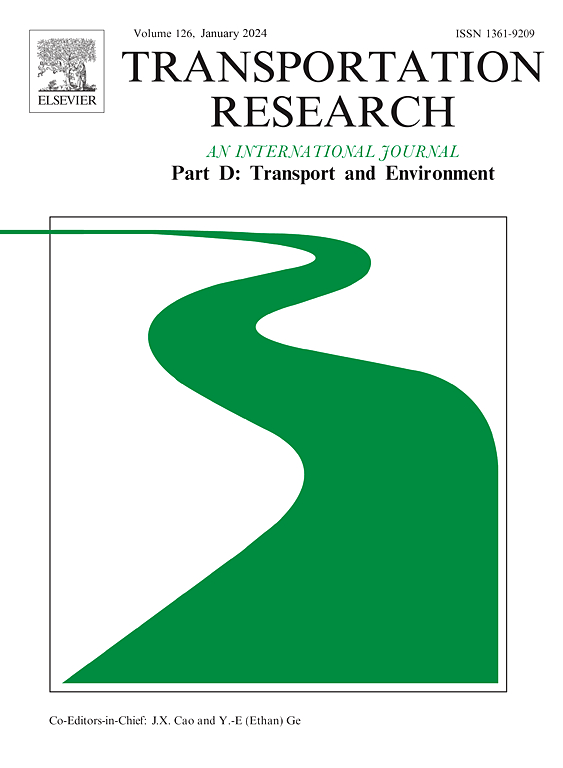建筑环境对地铁一体化共享单车和拼车使用的非线性影响
IF 7.7
1区 工程技术
Q1 ENVIRONMENTAL STUDIES
Transportation Research Part D-transport and Environment
Pub Date : 2025-07-03
DOI:10.1016/j.trd.2025.104898
引用次数: 0
摘要
人们很少关注建筑环境与地铁和共享交通的融合之间的非线性关系。本研究采用随机森林模型来检验和比较建筑环境对地铁一体化共享单车和拼车使用的非线性影响。它以上海为研究区域,以大量用户生成的共享单车和拼车出行为支撑。结果表明,与城市中心的距离和出入口数量是两个最显著的影响因素,而其他建成环境因素表现出不同程度的影响。有趣的是,二级和一级道路密度分别在预测共享单车和拼车服务的使用情况方面发挥着重要作用。此外,还研究了建筑环境的非线性效应。例如,当二级道路密度低于5.2 km/km2时,对共享单车的使用有积极的影响。然而,当次要道路密度超过这个阈值时,这种关系就不成立了。该研究为交通规划和政策制定提供了有价值的见解。本文章由计算机程序翻译,如有差异,请以英文原文为准。
Nonlinear effects of the built environment on metro-integrated bikesharing and ridesourcing usage
Limited attention has been paid to revealing nonlinear relationships between the built environment and the integration of metro and shared mobility. This study applies the random forest model to examine and compare the nonlinear effects of the built environment on metro-integrated bikesharing and ridesourcing usage. It takes Shanghai as the study area, supported by massive user-generated bikesharing and ridesourcing trips. The results show that the distance to the city center and the number of entrances are the two most significant impact factors, while other built environment factors show varying degrees of influence. Interestingly, secondary and primary road densities play a significant role in predicting the usage of bikesharing and ridesourcing services, respectively. Moreover, nonlinear effects of the built environment have been investigated. For example, when secondary road density is below 5.2 km/km2, it has a positive effect on bike-sharing usage. However, this relationship does not hold when the secondary road density exceeds this threshold. This study offer valuable insights for transportation planning and policy-making.
求助全文
通过发布文献求助,成功后即可免费获取论文全文。
去求助
来源期刊
CiteScore
14.40
自引率
9.20%
发文量
314
审稿时长
39 days
期刊介绍:
Transportation Research Part D: Transport and Environment focuses on original research exploring the environmental impacts of transportation, policy responses to these impacts, and their implications for transportation system design, planning, and management. The journal comprehensively covers the interaction between transportation and the environment, ranging from local effects on specific geographical areas to global implications such as natural resource depletion and atmospheric pollution.
We welcome research papers across all transportation modes, including maritime, air, and land transportation, assessing their environmental impacts broadly. Papers addressing both mobile aspects and transportation infrastructure are considered. The journal prioritizes empirical findings and policy responses of regulatory, planning, technical, or fiscal nature. Articles are policy-driven, accessible, and applicable to readers from diverse disciplines, emphasizing relevance and practicality. We encourage interdisciplinary submissions and welcome contributions from economically developing and advanced countries alike, reflecting our international orientation.

 求助内容:
求助内容: 应助结果提醒方式:
应助结果提醒方式:


